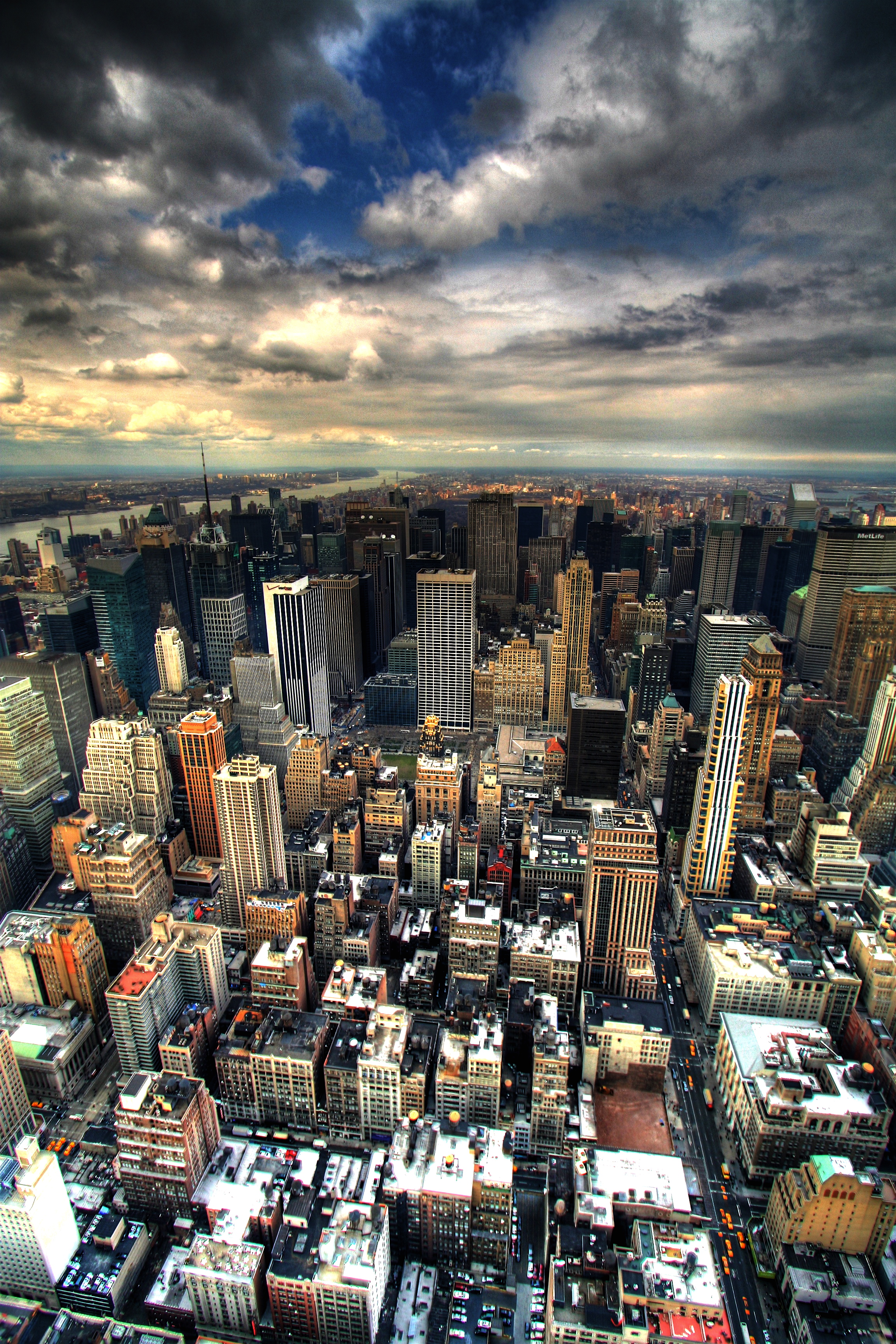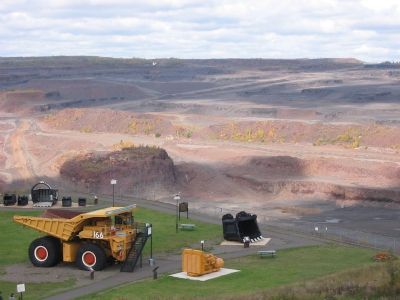 Lower Saranac Lake is one of three connected lakes, part of the Saranac River, near the village of Saranac Lake in the Adirondacks in northern New York. The Saranac Lake Islands Public Campground provides 87 campsites on inlands in Lower and Middle Saranac Lake. In addition to the Saranac River, it is fed by nearby Lake Colby, Fish Creek, and Lilly Pad Pond.
Lower Saranac Lake is one of three connected lakes, part of the Saranac River, near the village of Saranac Lake in the Adirondacks in northern New York. The Saranac Lake Islands Public Campground provides 87 campsites on inlands in Lower and Middle Saranac Lake. In addition to the Saranac River, it is fed by nearby Lake Colby, Fish Creek, and Lilly Pad Pond.Tuesday, May 20, 2008
A small island in Lower Saranac Lake in the Adirondacks in the U.S.
 Lower Saranac Lake is one of three connected lakes, part of the Saranac River, near the village of Saranac Lake in the Adirondacks in northern New York. The Saranac Lake Islands Public Campground provides 87 campsites on inlands in Lower and Middle Saranac Lake. In addition to the Saranac River, it is fed by nearby Lake Colby, Fish Creek, and Lilly Pad Pond.
Lower Saranac Lake is one of three connected lakes, part of the Saranac River, near the village of Saranac Lake in the Adirondacks in northern New York. The Saranac Lake Islands Public Campground provides 87 campsites on inlands in Lower and Middle Saranac Lake. In addition to the Saranac River, it is fed by nearby Lake Colby, Fish Creek, and Lilly Pad Pond.
Posted by
Ivica Miskovic
at
7:22 PM
44
comments
![]()
Labels: USA
Tuesday, May 13, 2008
What You'll See From the Top of the Empire State Building
 The Empire State Building is a 102-story art deco skyscraper in New York City, New York at the intersection of Fifth Avenue and West 34th Street. Its name is derived from the nickname for the state of New York. It stood as the world's tallest building for more than forty years, from its completion in 1931 until construction of the World Trade Center's North Tower was completed in 1972. Following the destruction of the World Trade Center in 2001, the Empire State Building again became the tallest building in New York City.
The Empire State Building is a 102-story art deco skyscraper in New York City, New York at the intersection of Fifth Avenue and West 34th Street. Its name is derived from the nickname for the state of New York. It stood as the world's tallest building for more than forty years, from its completion in 1931 until construction of the World Trade Center's North Tower was completed in 1972. Following the destruction of the World Trade Center in 2001, the Empire State Building again became the tallest building in New York City.
credited to wikimedia
Posted by
Ivica Miskovic
at
8:00 AM
2
comments
![]()
Labels: USA
Sunday, May 11, 2008
Beautiful View of the Night Sky in San Francisco
 One of those rare crystal clear nights with the perfect big puffy clouds above my city San Francisco.
One of those rare crystal clear nights with the perfect big puffy clouds above my city San Francisco.as you can see.
text and picture credited to flickr user dadwtwins
Posted by
Ivica Miskovic
at
1:04 PM
2
comments
![]()
Labels: USA
Thursday, April 24, 2008
What Chicago Looks Like at Night, From 36,000 Feet
 Chicago is a city in the state of Illinois and the largest in the Midwest. With a population of nearly 3 million people located almost entirely in Cook County (a portion of the city's O'Hare International Airport overlaps into DuPage County), Chicago is the third largest city in the United States. The population of Chicago's metropolitan area, which covers several counties (and commonly called Chicagoland), contains over 9.7 million people in Illinois, Wisconsin and Indiana, making it the third largest metropolitan area in the U.S. Adjacent to Lake Michigan, it is the largest city located on the Great Lakes and the world's twenty-second largest urban area by population. Chicago has been classified as an alpha world city for its worldwide economic influence.
Chicago is a city in the state of Illinois and the largest in the Midwest. With a population of nearly 3 million people located almost entirely in Cook County (a portion of the city's O'Hare International Airport overlaps into DuPage County), Chicago is the third largest city in the United States. The population of Chicago's metropolitan area, which covers several counties (and commonly called Chicagoland), contains over 9.7 million people in Illinois, Wisconsin and Indiana, making it the third largest metropolitan area in the U.S. Adjacent to Lake Michigan, it is the largest city located on the Great Lakes and the world's twenty-second largest urban area by population. Chicago has been classified as an alpha world city for its worldwide economic influence.credited to wikipedia and flickr user myelectricsheep
Posted by
Ivica Miskovic
at
9:11 AM
6
comments
![]()
Labels: USA
Friday, February 15, 2008
World's largest open pit iron ore Mine - Hibbing, Minnesota
 In addition to several thousand gorgeous lakes, Minnesota is home to a "natural wonder" that's actually human engineered. Sometimes called the "Grand Canyon of the North," the Hull Rust Mine is the biggest open pit iron ore mine in operation in the world. At the present time, it is more than three miles long, two miles wide, and nearly 540 feet deep. It's operated by the Hibbing Taconite Company.
In addition to several thousand gorgeous lakes, Minnesota is home to a "natural wonder" that's actually human engineered. Sometimes called the "Grand Canyon of the North," the Hull Rust Mine is the biggest open pit iron ore mine in operation in the world. At the present time, it is more than three miles long, two miles wide, and nearly 540 feet deep. It's operated by the Hibbing Taconite Company.There are varying estimates about how much rock and ore have been removed from this mine since it started operations in 1895, but it's somewhere around 2 billion tons. This is equivalent to the amount of earth you'd have to move if you dug a tunnel 24 feet in diameter through the entire earth. Originally, there were 30 separate mines, but these were consolidated into a single operation at the turn of the century. By 1901, this facility was managed by J.P. Morgan, and during the peak production period in the early 1940s, nearly a quarter of all iron ore mined in the United States came from the Hull Rust Mine.
- World's largest open pit iron ore mine
- First ore shipments in 1895 (still being mined today, 100 years later)
- Originally 30 separate mines
- Total area: 1,591 acres
- Total length: 3 1/2 miles
- Greatest width: 1 1/2 miles
- Greatest depth: 535 feet
- Total ore shipped: About 1 billion tons Total rock removed: About 2 billion tons (that's 4 trillion pounds!)

Posted by
Ivica Miskovic
at
1:28 PM
3
comments
![]()
Labels: USA
Monday, November 5, 2007
Strange storm in Iowa
 On a recent crisp autumn afternoon in Iowa, video cameras captured an unusual and visually dramatic result of two air masses colliding. Clouds split into a series of stripes and swept across the sky.
On a recent crisp autumn afternoon in Iowa, video cameras captured an unusual and visually dramatic result of two air masses colliding. Clouds split into a series of stripes and swept across the sky.
These so-called undular bores are created by atmospheric conditions that destabilize the air in a particular way. In the case of Des Moines, Iowa, they formed on Oct. 3 when a group of thunderstorms  approached the city.
approached the city.
"At the time, a layer of cold, stable air was sitting on top of Des Moines," said atmospheric scientist Time Coleman of the National Space Science and Technology Center in Alabama. "The approaching storms disturbed the air, creating a ripple akin to what we see when we toss a stone into a pond."
A time-lapse video of the event shows just how strange it looked.
Undular bores are a type of gravity wave, one in which gravity is the force that pulls the wave down. Coleman likens the cloud waves to those created when a boat moves across the water.
"When a boat goes tearing across a lake, water in front of the boat is pushed upward," he explained. "Gravity pulls the water back down again and this sets up a wave."
The thunderstorms played the role of the boat in the skies over Des Moines in early October.
On radar images, the bores show up as bands denoting waves moving toward the radar and away from it. Coleman noted that residents of Des Moines actually felt the back-and-forth breeze as the waves traveled overhead.
"Flags flew one way during the crest of the wave and swung around 180 degrees to fly in the opposite direction during the trough," Coleman said.
The waves of undular bores typically measure 5 miles from peak to peak and race across the sky at 10 to 50 mph. Coleman estimates that one passes over any given point in the United States about once a month.
Undular bores can go on to form thunderstorms themselves.
"These waves churn up the atmosphere, causing instabilities that can initiate and sustain severe storms," Coleman said.
Of particular concern is the waves' ability to amplify tornadoes as they pass through the atmosphere, which is exactly what happened when an F5 (the strongest classification of tornado) struck right outside Birmingham, Alabama, in April 1998.
"At first the tornado was doing relatively little damage," Coleman recalled. "But our research shows that just before the tornado reached Birmingham, it was hit by an undular bore," causing it to spin up and increase in both intensity and size. The tornado went on to destroy more than 1,000 homes and businesses and caused $200 million in damage.
Posted by
Ivica Miskovic
at
11:30 AM
1 comments
![]()
Labels: USA
Thursday, September 13, 2007
Enormous Spider Web Found In Texas
 An arachnaphobe’s worst nightmare, the gauzy, insect-laden web drew more than 3,300 curious visitors over the three-day holiday to this 376-acre park on the shore of Lake Tawakoni, 50 miles east of Dallas. On Labor Day, the park recorded 1,275 people visiting just to see the web.
An arachnaphobe’s worst nightmare, the gauzy, insect-laden web drew more than 3,300 curious visitors over the three-day holiday to this 376-acre park on the shore of Lake Tawakoni, 50 miles east of Dallas. On Labor Day, the park recorded 1,275 people visiting just to see the web.“When I first saw it,” said Park Superintendent Donna Garde, “I was totally amazed. What ran through my mind was that this looked like something out of a low-budget horror movie, but I was looking at something five times as big as what you’d see on a Hollywood set.”
Stumped as to the web’s origin, the initial consensus of arachnologists and entomologists who saw an online photo of the web sent by Texas Parks and Wildlife Department biologist Mike Quinn was that it may have resulted from a “mass dispersal” event. In such an event, millions of tiny spiders or spiderlings spin out silk filaments to ride air currents in a phenomenon known as “ballooning.”
Quinn collected a sample of spiders Aug. 31 from in and around the gigantic web and took them to Texas A&M University in College Station for analyses. Entomology Department researcher Allen Dean identified 11 spider families from the sample. The most prevalent species was the Tetragnatha guatemalensis, or what Quinn dubbed the Guatemalan long-jawed spider, since this species didn’t have a common name. Guatemala was the country in which it was first documented.
“I drove 50 to 100 spiders to A&M on Saturday,” Quinn said. “Spider experts tend to specialize in one or few families of spiders. There are nearly 900 species of spiders known from Texas, so no one is an expert on all the species.”
Quinn described the Lake Tawakoni web as “sheet webbing” since it covers a large area of trees, which is more typical of a web spun by a funnel web spider rather than the classic Charlotte’s web, or orb web, like that produced by long-jawed spiders. He speculates that the park’s spider population exploded due to wet conditions this summer that resulted in an abundance of midges and other a small insects upon which the spiders feed.
The Guatemalan long-jawed spider ranges from Canada to Panama, and even the islands of the Caribbean. According to Quinn, the spider is about an inch in length with a reddish-orange head- and-thorax. Spiders, like mites and scorpions, are arachnids, a group of arthropods with four pairs of legs, saclike lungs and a body divided into two segments.
So popular was the monster Lake Tawakoni spider web phenomenon that it ran as the lead story in the Nation section of the Aug. 31 New York Times, and was the newspaper’s most e-mailed article that day. The nightmarish quality of the story prompted satirical takes on several Internet Web sites and led to national coverage on Fox News, the Discovery Channel, CNN and other networks. Quinn termed the degree of news coverage “remarkable.”
Dr. Norman Horner, a retired dean of the College of Science and Mathematics at Midwestern State University in Wichita Falls, was on his way to the park mid-week to study the “not very common” phenomenon, when he received a call from park staff telling him that a heavy overnight rainstorm had made the trail impassable and knocked down much of the giant web.
“So far,” Horner said, “we have been informed of webs of this nature occurring in Florida, California, Canada, Italy, Ohio and now Texas. In all cases, they appear to have been produced by tetragnathids, but have other species associated with them.”
Superintendent Garde said Sept. 5 that the crowds coming to see the wondrous creation had slowed to a trickle, and that they were not being allowed to access the nature trail due to the sloppy conditions.
“It was fun, but we were really tired,” Garde said. “The spiders are great little guys. They put our park on the map.”
Posted by
Ivica Miskovic
at
11:53 PM
2
comments
![]()
Labels: USA
Tuesday, September 11, 2007
Grand Canyon pictures
 The Grand Canyon is more than a great chasm carved over millennia through the rocks of the Colorado Plateau. It is more than an awe-inspiring view. It is more than a pleasuring ground for those that explore the roads, hike the trails, or float the currents of the turbulent Colorado River.
The Grand Canyon is more than a great chasm carved over millennia through the rocks of the Colorado Plateau. It is more than an awe-inspiring view. It is more than a pleasuring ground for those that explore the roads, hike the trails, or float the currents of the turbulent Colorado River. This canyon is a gift that transcends what we experience. Its beauty and size humbles us. Its timelessness provokes a comparison to our short existence. In its vast spaces we may find solace from our hectic lives.
The Grand Canyon we visit today is a gift from past generations. Take time to enjoy this gift. Sit and watch the changing play of light and shadows. Wander along a trail and feel the sunshine and wind on your face. Attend a ranger program. Follow the antics of ravens soaring above the rim. Listen for the roar of the rapids far below. Savor a sunrise or sunset.
Posted by
Ivica Miskovic
at
9:56 AM
0
comments
![]()
Labels: USA











